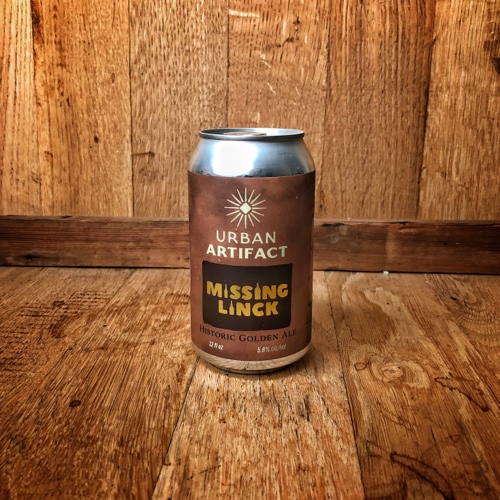A brewery that in the grand scheme of Cincinnati beer, didn’t really last a very long time has managed to create a lasting impact due to a story that was born during our current craft beer “explosion”. Some historians have written over the years that F&J Linck didn’t make beer that was very “good” (that would explain their short life) – so clearly, we know that their legacy is about something a little more interesting.
Before we get to all of that, though (and I promise, we will) we need to talk about what the Linck Brewery was all about.
How It All Began
The Linck Brothers, Frank, and Joseph A. grew up in what at the time was known as the Northern Liberties – this part of Cincinnati sat north of the city and was named as such because of its separation from the Municipal Law of the city. The brothers lived above a family tavern on Hamilton Rd (now known as McMicken Ave).
The brewery was built around 1855 at 77 Hamilton Road, now known as McMicken avenue in OTR, at the site of what is now Grant Park. They brewed a range of styles and even operated their own bottling company, something that wasn’t super common at the time. Over on race street, near current-day Findlay Market, they operated a lagering cellar (again… we’ll get back to that) to age and store their beer.
The Closure, And The Slow Death
As we mentioned at the start of this – The Linck Brewery wasn’t making beer that was very “good” – so they didn’t last very long. Mounting debt forced the brothers to sell the brewery after only five years (in 1860), with the space and all the equipment being sold for $34,000 in late June of that year. However… it wasn’t the end for the brewery.
The lagering tunnels over on Race Street were leased out after its purchase. They were used by breweries like Windisch & Muhlhauser, Moerlein, Jackson Kauffman, Sohn, Schaller & Gerke. It seems like every major brewery used the cellars as extra space at some point.
Meanwhile, the brewery itself over on Hamilton Rd was eventually purchased by their neighbors over at the John Kaufman Brewery who converted it into a Malt House. Later, the space was sold to Christian Boss and the Gambrinus Stock Brewing Company. Eventually, in 1911, it fell into the hands of the city, which demolished the buildings and turned it into what we now know as Grant Park.
The Modern Rebirth
This is where the story takes a very unique spin – and it wraps in some folks that if you’re a current beer drinker in Cincinnati, you might be a little more familiar with.
In 2016 during some construction over on Race Street, the long forgotten lagering tunnels were uncovered by workers. This, wildly enough, isn’t that uncommon here in Cincinnati – we made a lot of beer pre-prohibition, and a ton of those breweries used tunnels underground. The tunnel under Race St, though, (those F&J Linck Tunnels) had something that you don’t ever see… an intact fermentation vessel. This discovery intrigued some local beer geeks – the brewers over at Urban Artifact.
Over at Urban Artifact, they have been collecting wild yeast to experiment with since they opened their doors. They were extremely familiar with the process, but doubtful that they’d be able to find something useable down in these tunnels. With a surprise to them, they managed to snag a little bit of usable yeast off of the fermentation vessel – and not only prop it up, but actually make a great beer out of it.
That yeast has become the building block of the Missing Linck Festival… named as such because of the brewery that started it all. Every summer, breweries gather to make beers with this historic yeast and pay homage to not just Cincinnati’s brewing past, but to the idea that wild ideas can actually work. To learn more about the festival, you can also visit the official website here!

The F&J Linck Brewery Timeline
- 1855 – The Brewery opens for business
- 1860 – Due to mounting debt, the brewery closes.
- 1860 – The brewery is purchased at auction, but after that, we lose track of what happened to it for a while.
- ???? – The brewery at some point was sold to their neighbors, the John Kaufman Brewery when it was converted into a malt house.
- ???? – The was then sold to the Gambrinus Stock Brewing Company
- 1911 – The brewery was sold to the city when it was finally demolished and turned into Grant Park
- 2016 – The lagering tunnels are uncovered during construction
- 2017 – Urban Artifact resurrects a forgotten yeast from the tunnels off of a fermentation vessel.
